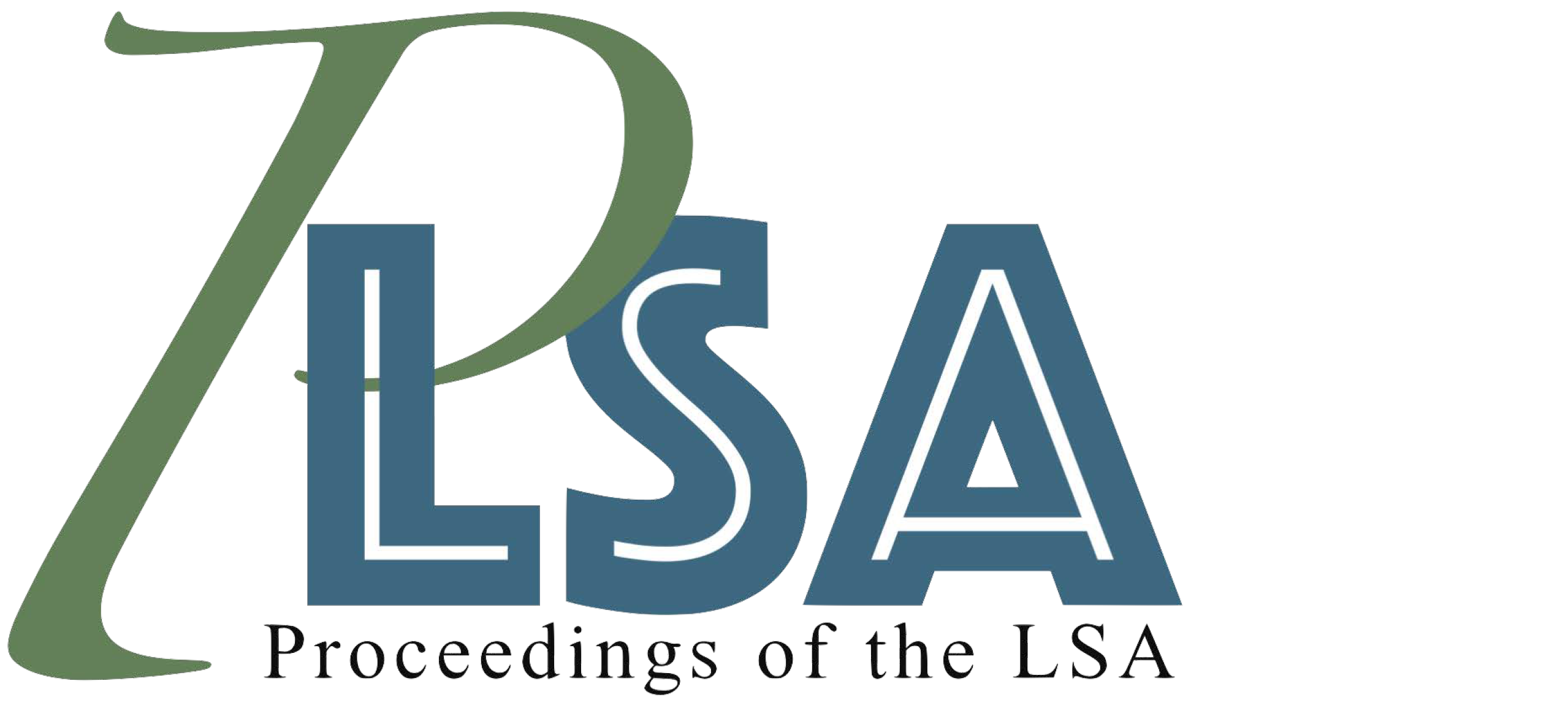Hindi nominal suffixes are bimorphemic: A Distributed Morphology analysis
DOI:
https://doi.org/10.3765/plsa.v3i1.4301Keywords:
Hindi, noun inflection, adjectival inflection, Distributed MorphologyAbstract
This paper provides a Distributed Morphology (DM) analysis for Hindi nominal (noun and adjectival) inflection. Contra Singh & Sarma (2010), I argue that nominal suffixes contain two morphemes – a basic morpheme, and a restrictedly distributed additional morpheme. The presence of two different morphemes is especially evident when one compares noun and adjectival inflectional suffixes, which Singh & Sarma (2010) do not, since they only look at noun inflection. I also show that the so-called adjectival inflectional suffixes are not limited to adjectives, and may occur on nouns, provided the noun is not at the right edge of the noun phrase. On the other hand, the regular noun inflection is only limited to nouns at the right edge of the noun phrase. This is demonstrated using a type of coordinative compound found in Hindi. Then, I take the fact that nouns can take either the regular noun inflection or the so-called "adjectival" inflection as motivation for a unified analysis for both sets of suffixes. I demonstrate that after undoing certain phonological rules, the difference between the "adjectival" and regular noun inflectional suffixes can be summarized by saying that the additional morpheme only surfaces in the regular noun inflectional suffixes. Finally, I provide vocabulary entries and morphological operations that can capture the facts about the distribution of the various basic and additional morphemes.Downloads
Published
2018-03-03
Issue
Section
Articles
License
Published by the LSA with permission of the author(s) under a CC BY 4.0 license.
How to Cite
Sinha, Yash. 2018. “Hindi Nominal Suffixes Are Bimorphemic: A Distributed Morphology Analysis”. Proceedings of the Linguistic Society of America 3 (1): 20:1–10. https://doi.org/10.3765/plsa.v3i1.4301.
